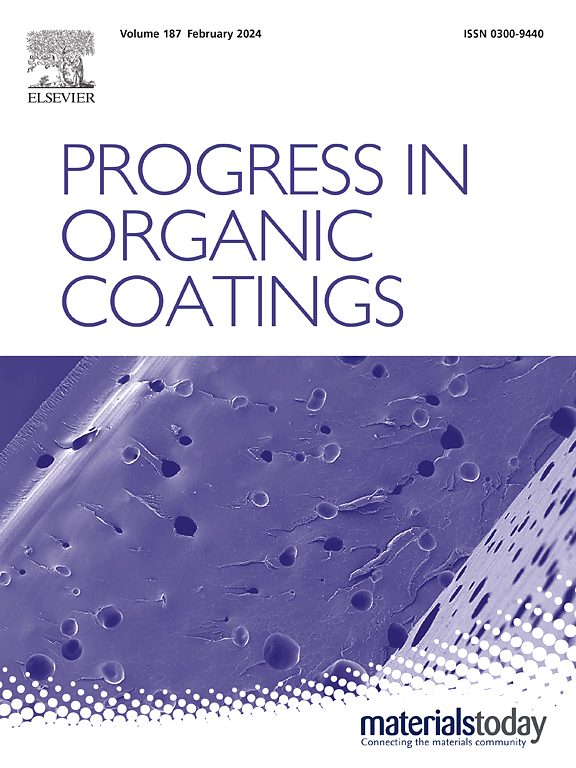应用壳聚糖纳米粒子改性纺织品的最新进展
IF 7.3
2区 材料科学
Q1 CHEMISTRY, APPLIED
引用次数: 0
摘要
纺织业不断要求创新产品,包括开发可通过多种整理工艺生产的功能性纺织品,保持织物的理想品质,并改变不理想的品质。在纤维上应用壳聚糖纳米颗粒(ChiNps)的方法备受关注。壳聚糖是一种可再生、生物相容性好、可生物降解的多糖,能够为纺织品提供抗菌活性。此外,壳聚糖还能改善染色工艺和织物的抗性,并赋予织物其他特性,如阻燃性和防紫外线性。尽管使用 ChiNps 对纺织品进行改性非常重要,但仍需要对文献进行回顾,重点关注化学相互作用和方法,以及与特性和耐久性相关的信息。本综述介绍了为进一步应用于纺织品而制备氯化萘的主要技术。重点关注过去五六年中有关在纺织品表面普遍应用 ChiNps 的出版物的最新进展和前景。这些出版物按 ChiNps 与织物的相互作用类型进行了分类,包括分子间相互作用或共价键,以及 ChiNps 与金属纳米粒子的结合研究。大多数研究采用离子交联法形成 ChiNps,这是一种更为直接的方法。此外,ChiNps 主要通过分子间相互作用融入织物表面。因此,极性较弱的纯合成织物与 ChiNps 的结合就不那么精确。不过,一些有前景的反应可能会克服这些不便,包括共价键或 ChiNps 与金属或金属氧化物纳米颗粒的结合。本文章由计算机程序翻译,如有差异,请以英文原文为准。
Recent advances in the application of chitosan nanoparticles for the modification of textiles
The textile industry constantly demands innovative products, including developing functional textiles that can be produced by several finishing processes, maintaining the desired qualities of the fabric, and modifying the undesired ones. Methodologies applying chitosan nanoparticles (ChiNps) on the fiber are attracting much interest. Chitosan is a renewable, biocompatible, and biodegradable polysaccharide capable of providing antimicrobial activity to textiles. Besides that, ChiNps can improve dyeing processes and fabric resistance and confer other features, such as flame-retardant capacity and UV protection. Despite the importance of textile modification using ChiNps, the literature needs a review focused on chemical interactions and methods, crossing information with properties and durability. This review presents the main techniques used to prepare ChiNps for further application on textiles. It focuses on the recent advances and perspectives of the publications of the last five to six years concerning the general application of ChiNps to the surface of textiles. The publications are organized by the type of ChiNps interaction with the fabric, including intermolecular interaction or covalent bonds and research combining ChiNps with metallic nanoparticles. Most studies use ionic cross-linking to form ChiNps, a more straightforward methodology. Furthermore, ChiNps are incorporated into the surface of fabrics, primarily using intermolecular interactions. For this reason, pure synthetic fabrics, which are less polar, are much less precisely used with ChiNps. However, some promising reactions might overcome these inconveniences, including covalent bonds or the association of ChiNps and metal or metal oxide nanoparticles.
求助全文
通过发布文献求助,成功后即可免费获取论文全文。
去求助
来源期刊

Progress in Organic Coatings
工程技术-材料科学:膜
CiteScore
11.40
自引率
15.20%
发文量
577
审稿时长
48 days
期刊介绍:
The aim of this international journal is to analyse and publicise the progress and current state of knowledge in the field of organic coatings and related materials. The Editors and the Editorial Board members will solicit both review and research papers from academic and industrial scientists who are actively engaged in research and development or, in the case of review papers, have extensive experience in the subject to be reviewed. Unsolicited manuscripts will be accepted if they meet the journal''s requirements. The journal publishes papers dealing with such subjects as:
• Chemical, physical and technological properties of organic coatings and related materials
• Problems and methods of preparation, manufacture and application of these materials
• Performance, testing and analysis.
 求助内容:
求助内容: 应助结果提醒方式:
应助结果提醒方式:


